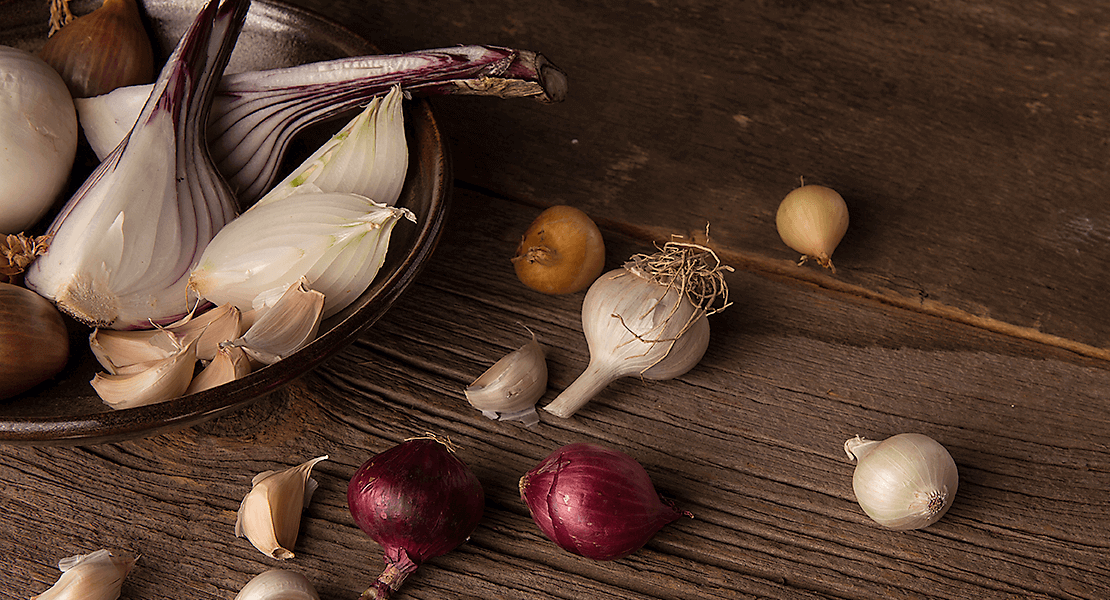
Onions. What other food can make you cry without even trying?
Onions and other alliums are found in nearly every cuisine, in every corner of the earth. But why? Why do we love onions so much, and why are they so delicious?
From a chef’s perspective, alliums have the ability to transform as we cook them. Different types of cooking techniques produce different types of flavors. Alliums are the perfect example of how chefs or cooks impose their will onto an ingredient through the addition of heat.
Take the common yellow onion, for example, and how different cooking techniques can create a delicious, multi-dimensional foundation to build from.
Raw—Pungent, aggressive and assertive. Remains on palate for a long time. Provides fresh flavor in salsas, salads and other cold preparations.
Sweated or Sautéed—Sweet. A foundational flavor for chefs to build on in soups and sauces. Diced or sliced onions are added to pan with fat and salt, then cooked over low heat for about 10 minutes until the onions become translucent.
Grilled or Dry Roasted—Charred flavor on the surface with sweet notes of sweated onion on the interior. ¼-inch slices are rubbed with oil and grilled over an open flame for 10-15 minutes.
Caramelized—The sweetest of all preparations with a fully developed flavor. Sliced onions are cooked in fat over low heat for about 45 minutes until jammy thick and brown.
Explore Our Culinary Garlic, Onion & Specialty Allium Ingredients
Capture the authentic flavor of dishes across cuisines & cultures using our unrivaled allium portfolio
Learn More